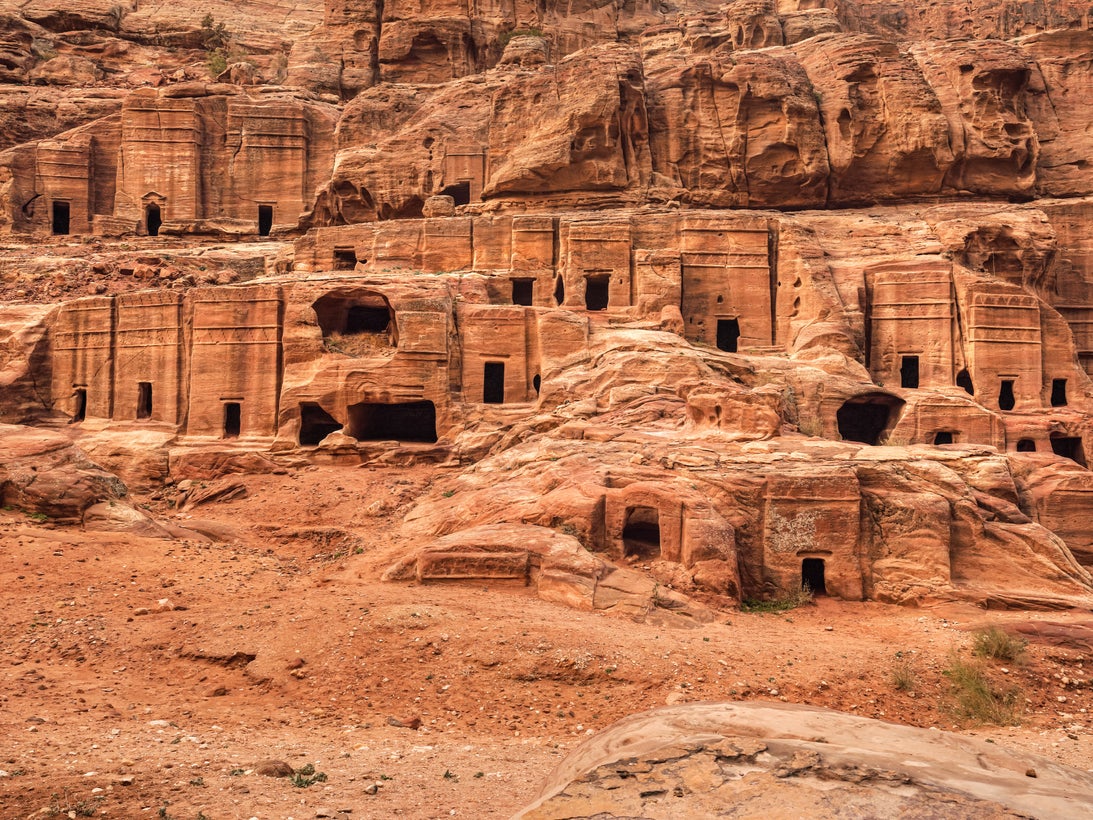Petra, in southern Jordan, is a love letter to human civilization from a long-lost empire. The Nabataeans, a nomadic Arabic people, began chiselling away at the natural sandstone surroundings around 2,300 years ago, slowly fanning out into the surrounding wadis (“canyons” in Arabic) over the centuries until it contained, it is believed, between 30,000 and 40,000 people. When Swiss explorer Johann Ludwig Burckhardt put it on the archaeological map in 1812, it was a ghost town, following centuries of abandonment.
While much of the city is gone, many of its monumental structures remain, carved straight into the cliffs. It’s a powerful testament to their construction abilities that the buildings most important to the Nabataeans withstood the intervening centuries while so few other civilizations were able to conjure anything quite so magnificent. With that in mind, Petra’s status as a Unesco World Heritage Site as well as one of the New Seven Wonders of the World, comes as little surprise.
What to do
Into the wadi

Petra is ‘a rose-red city half as old as time,’ according to a poem by John Burgon
(Getty)
There’s a reason it took so long for the world to learn of Petra, the city is largely concealed deep inside a network of gorges and canyons. The main entrance, on the city’s eastern side, offers the most dramatic introduction to the city. Starting on the edge of Wadi Musa, the tourist town that has swelled up around this gateway, enter the narrow canyon called the Siq. Although you’ll be encouraged to take a donkey, avoid doing so; cruelty aside, hefty tips are often demanded, and the Petra experience is far better without the hassle.
Cliffs tower over this narrow path, which weaves through the sinewy rock for 1.2km, finally opening onto Al-Khazneh, better known as The Treasury. One of Petra’s highlights, its lofty columns and shallow pediment are topped by a vast funerary urn; the whole structure is carved directly into the cliff. As with much of the site, there is no concrete certainty as to its significance, although it is thought to be the tomb of an important Nabataean ruler at the time it was built in the first century.
Read more on Middle East travel:
From here, a series of lofty carved buildings straddle the canyon floor on either side, which winds onwards to your right. Although many smaller…
Click Here to Read the Full Original Article at The Independent Travel…
